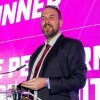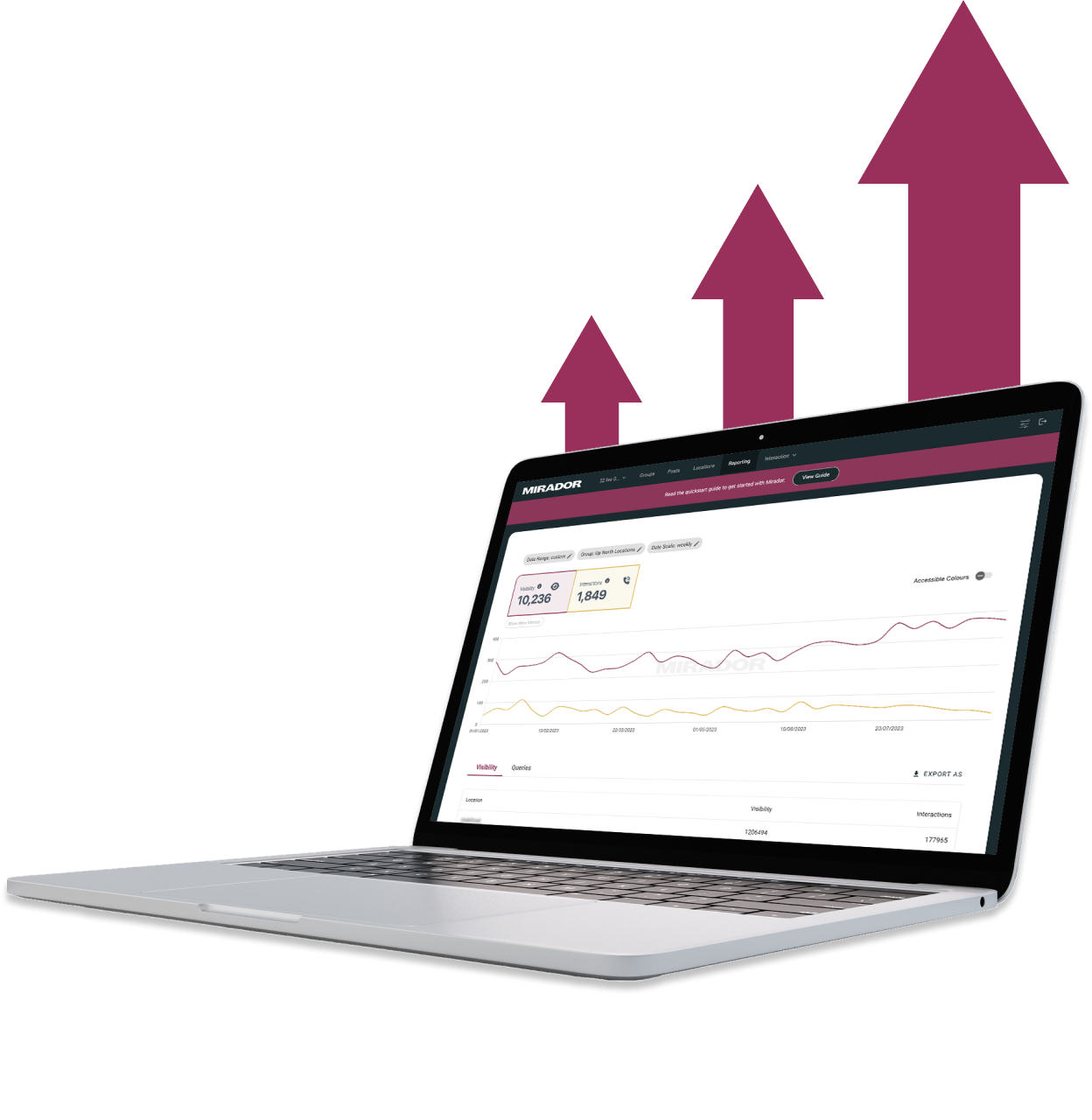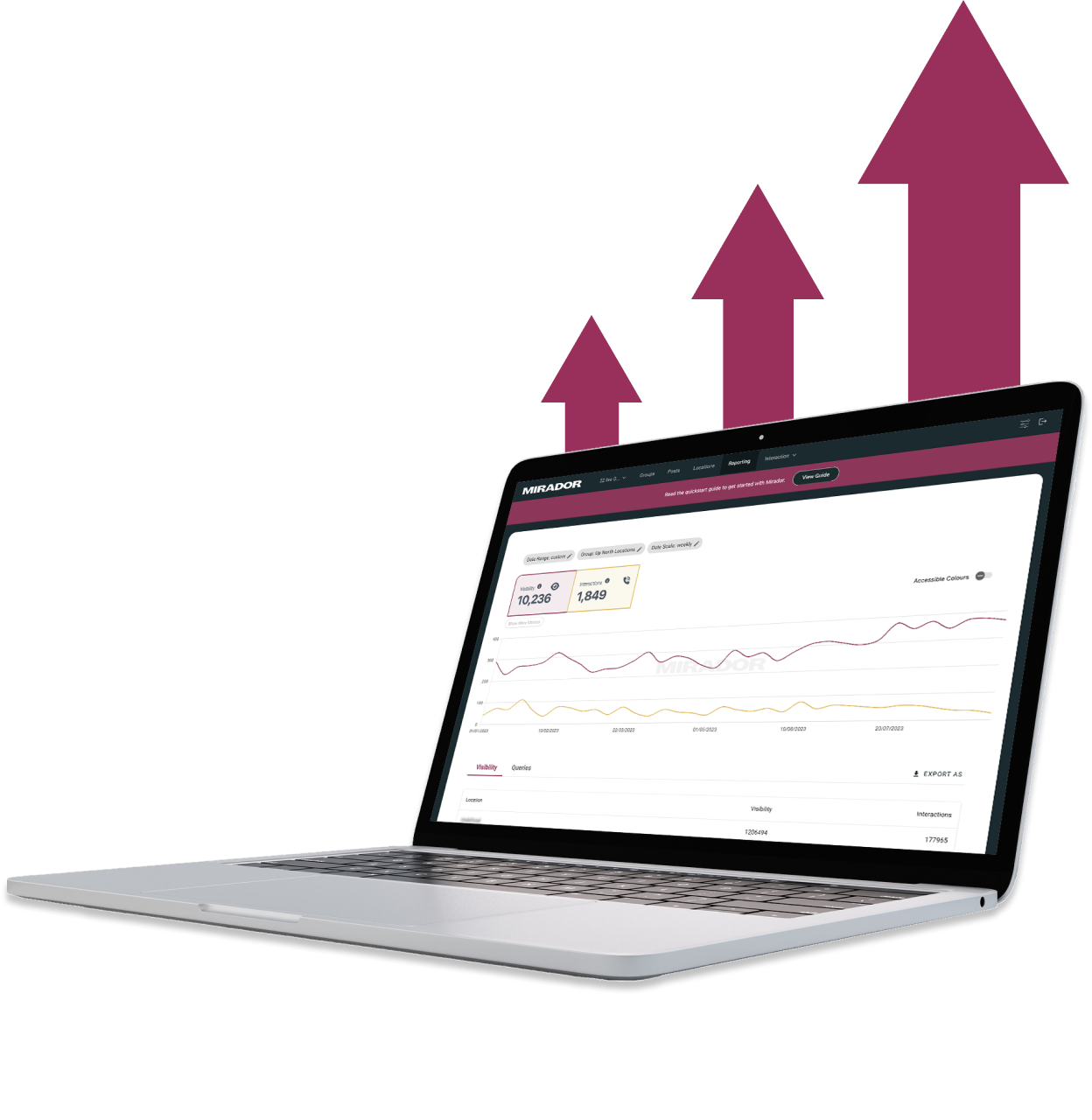Efficiently Translate Figma Designs to Webflow: A Game-Changing Solution for SaaS Companies
In the world of web design and development, two platforms have emerged as game changers for SaaS companies: Webflow and Figma. Understanding the capabilities of both these platforms and harnessing their synergy can significantly streamline your design-to-development workflow.

The Power of Webflow and Figma
In the world of web design and development, two platforms have emerged as game changers for SaaS companies: Webflow and Figma. Understanding the capabilities of both these platforms and harnessing their synergy can significantly streamline your design-to-development workflow.
Understanding Webflow
Webflow is a powerful web design tool that allows you to design, build, and launch responsive websites visually, while writing clean, semantic code for you. Webflow's main advantage lies in its ability to provide the flexibility of front-end coding without requiring you to write the code manually. It gives you complete control over the layout and design, enabling you to create custom, interactive websites that are tailored to your brand's needs. Learn more about the benefits of using a Webflow agency.
Understanding Figma
On the other hand, Figma is a cloud-based design tool that facilitates collaboration among designers. It allows multiple users to work together on a design in real-time, making it an ideal solution for team-based projects. Figma supports vector networks, has robust typography tools, and includes components and styles for easy re-use of design elements. It's a comprehensive tool for creating user interfaces, prototypes, and graphics.
Synergy Between Figma and Webflow
The real magic happens when you combine the powers of Figma and Webflow. The process of translating Figma designs to Webflow, or 'Figma to Webflow' as it's often called, can be a game-changing solution for SaaS companies. This process enables designers to create in Figma and then bring those designs to life in Webflow, resulting in a seamless design-to-development workflow that saves time, reduces errors, and enhances the overall quality of the end product.
In this workflow, Figma acts as the 'design hub', where all visual elements and design decisions are made. Once the design is finalized, it's then translated into Webflow, where the website is built and launched. The result is a streamlined process that bridges the gap between design and development, ultimately leading to a more efficient workflow and a higher quality final product.
By harnessing the power of Webflow and Figma, you can create stunning, interactive websites that are not only visually appealing but also fully functional and responsive. Whether you're a small start-up or a large enterprise, leveraging these tools can give you a competitive edge in today's digital landscape. For more insights on maximizing the potential of Webflow, check out our articles on Webflow integrations and Webflow maintenance.
The Process of Translating Figma to Webflow
The transformation of Figma designs into Webflow is a three-step process that involves the Figma design phase, the translation phase, and finally, implementation in Webflow. Each step is crucial to ensure a seamless transition and high-quality output.
Figma Design Phase
The first step in the process is creating your design in Figma. Here, you're able to utilize the plethora of design tools and features that Figma offers to bring your vision to life. Whether you're designing a simple landing page or a complex web application, Figma provides the flexibility you need.
During this phase, it's crucial to keep the capabilities of Webflow in mind. While Figma allows for incredibly detailed designs, not every element can be replicated exactly in Webflow. Therefore, understanding the constraints and possibilities of Webflow can help you create a Figma design that translates smoothly.
Translation Phase
Once the design in Figma is complete, the next step is to translate it to Webflow. This involves interpreting the design elements in Figma and figuring out how to recreate them in Webflow.
In this phase, you'll look at each component of your Figma design - from typography and colors to layout and animations - and map out how to build them in Webflow. It's a complex task that requires a deep understanding of both platforms, but the result is a smooth transition from design to development.
Implementation in Webflow
The final phase is implementing the translated design in Webflow. This step involves using Webflow's intuitive interface to build the website according to the plan laid out in the translation phase. Webflow's visual development environment allows for precise control over every aspect of the website's design and functionality.
During this phase, it's important to test the website thoroughly to ensure that it looks and functions as intended across different devices and browsers. Webflow's built-in tools for responsive design and cross-browser compatibility can be incredibly helpful in this regard.
Remember, while the goal is to replicate the Figma design as closely as possible, you might have to make some adjustments based on Webflow's capabilities. The key is to maintain the overall look and feel of the design while leveraging Webflow's powerful web development features.
This process of translating Figma to Webflow is a game-changer for SaaS companies, as it streamlines the design-to-development workflow and allows for rapid prototyping. By understanding and following these steps, you can ensure a smooth and efficient transition from Figma to Webflow. For more insights and resources on Webflow, check out our webflow agency post.
Advantages of Figma to Webflow Translation
The translation of Figma designs to Webflow isn't merely a technical process—it also brings about several advantages that can significantly enhance your SaaS operations. In this section, we will delve into the key benefits, namely, the enhanced efficiency, improved design-to-development workflow, and streamlined team collaboration.
Enhanced Efficiency
Translating Figma designs to Webflow can significantly improve the efficiency of your design and development process. This process allows your design and development teams to work on the same platform, reducing the time spent on back-and-forth communication, thus enabling a faster turnaround time.
Additionally, Webflow's intuitive interface and powerful features make it possible to bring Figma designs to life without the need for extensive coding. This means that even complex designs can be implemented quickly and accurately, saving valuable development time.
Improved Design-to-Development Workflow
The Figma to Webflow process also enhances the design-to-development workflow. In traditional workflows, designers create mockups in a design tool, which developers then have to manually code into a website. This process can be time-consuming and prone to errors, as it relies on the developer's interpretation of the design.
By translating Figma designs directly into Webflow, you can ensure that the final website accurately reflects the original design. This direct translation eliminates the guesswork and potential misinterpretations involved in the traditional design-to-development workflow.
Streamlined Team Collaboration
Lastly, the Figma to Webflow translation process fosters improved collaboration within your team. In Figma, multiple team members can work on a design simultaneously, making real-time updates and leaving comments. These features promote clear communication and ensure that everyone is on the same page.
Once the design is finalized in Figma, it can be directly translated into Webflow. This seamless transition allows your design and development teams to work in tandem, streamlining the entire process from initial design to final implementation.
In sum, the translation of Figma designs to Webflow offers numerous benefits that can significantly improve your SaaS operations. From enhancing efficiency to improving workflow and fostering team collaboration, this process is a game-changer for any Webflow agency.
Best Practices for Figma to Webflow Translation
Successfully translating Figma designs into Webflow involves more than just a straightforward conversion process. To ensure a smooth and efficient transition from design to development, you should adopt some best practices. Here we will discuss organizing your Figma designs, optimizing designs for Webflow, and troubleshooting common issues.
Organizing Your Figma Designs
Before you start the translation process, it's crucial to ensure your Figma designs are well-organized. A well-structured design file can not only make the translation process easier but also save you from potential headaches down the line.
- Naming conventions: Assign clear and descriptive names to your frames, components, and layers. This will help you quickly identify and locate specific elements during the translation process.
- Layer hierarchy: Maintain a logical and consistent layer hierarchy in your Figma designs. This will mirror the DOM structure in Webflow and facilitate the translation process.
- Consistent styles: Use Figma's styles feature to maintain consistency in your designs. This can make the process of replicating styles in Webflow much more straightforward.
Optimizing Designs for Webflow
Optimizing your Figma designs for Webflow is a critical step in the translation process. This involves tweaking your design elements in a way that they can be easily replicated in Webflow.
- Grids and layouts: Try to use Figma’s grid and auto layout features as much as possible. This will make it easier to recreate your designs using Webflow’s layout and grid systems.
- Breakpoints: Design for all standard breakpoints in Figma. This will ensure your designs are truly responsive when implemented in Webflow.
- Typography: Limit the use of custom fonts and try to stick to Webflow's supported fonts. If you must use custom fonts, make sure they are web-friendly and can be easily uploaded to Webflow.
Troubleshooting Common Issues
Despite your best efforts, you might still run into some issues during the translation process. Here are some common issues and their potential solutions:
- Inconsistent dimensions: If you find that your design elements have inconsistent dimensions in Webflow, double-check your Figma designs. Ensure that all elements have the correct sizes and are aligned properly.
- Color discrepancies: If the colors in your Webflow site do not match your Figma designs, verify that you are using the correct color codes. Also, check your screen's color settings, as it can sometimes cause discrepancies.
- Responsive design issues: If your design isn’t responding well to different screen sizes in Webflow, revisit your Figma designs and ensure you’ve designed for all standard breakpoints.
Remember, the more you practice the figma to webflow translation process, the more efficient you will become. If you need further help, don't hesitate to reach out to a webflow agency for professional assistance. Following these best practices will not only make the translation process easier but also help you create stunning, functional websites in Webflow from your Figma designs.
The Impact on SaaS Companies
The translation process from Figma to Webflow not only optimizes your workflow but also brings significant benefits for your SaaS company. It aids in speeding up product development, increasing design consistency, and facilitating growth and scalability.
Speeding up Product Development
With a streamlined workflow, your SaaS company can drastically speed up the product development process. The smooth transition from Figma designs to Webflow implementation reduces the time spent on back-and-forths between designers and developers. This efficiency helps your team to deliver high-quality products at a much faster pace.
The impact of this speed-up can be seen in the following table:
Traditional WorkflowFigma to Webflow WorkflowDesign Phase2 weeks1 weekDevelopment Phase4 weeks2 weeksTotal Time6 weeks3 weeks
By adopting the Figma to Webflow translation process, product development time can be reduced by up to 50%.
Increasing Design Consistency
Maintaining design consistency becomes more manageable with the Figma to Webflow translation process. As you're directly implementing your Figma designs in Webflow, the chances of design deviations during the development phase are significantly minimized.
This increased consistency not only enhances the user experience but also strengthens your brand's identity across different platforms. For tips on maintaining design consistency, check out our article on webflow design agency.
Facilitating Growth and Scalability
The Figma to Webflow process also facilitates growth and scalability for your SaaS company. With a more efficient design-to-development workflow, your team can effectively manage more projects simultaneously, paving the way for business expansion.
Moreover, as your product line grows, maintaining design consistency becomes crucial. The ability to implement Figma designs directly into Webflow makes it easier to ensure that all your products align with your brand's design guidelines.
In addition, Webflow's flexibility and robust features, such as webflow integrations, make it an excellent platform for scaling your business. As your company grows, you can take advantage of Webflow's capabilities to build more complex and dynamic websites without compromising on design quality or efficiency.
In summary, the Figma to Webflow translation process has a significant impact on SaaS companies. It accelerates product development, enhances design consistency, and facilitates business growth and scalability. By adopting this efficient workflow, you can streamline your operations and set your SaaS company on the path to success.
Get started⚡
Supercharge your webflow website
- 🖥️ Unlimited Webflow Development
- 🛠️ Unlimited Tasks (1 active)
- ⏰ 2-3 Day Turnaround
- 📞 Bi-Weekly Calls
- 🤝 Dashboard & Slack Collaboration
- 🔄 Cancel/Pause Anytime
- 🎨 Webflow Dev + Figma Design
- 🛠️ Unlimited Tasks & Projects (1 active)
- ⏰ 1-3 Day Turnaround
- 📞 Bi-Weekly Calls
- 🤝 Dashboard & Slack Collaboration
- 🔄 Cancel/Pause Anytime
10% OFF
£9.45k billed quarterly
- 🖥️ Unlimited Webflow Development
- 🛠️ Unlimited Tasks (1 active)
- ⏰ 2-3 Day Turnaround
- 📞 Bi-Weekly Calls
- 🤝 Dashboard & Slack Collaboration
- 🔄 Cancel/Pause Anytime
10% OFF
£10.8k billed quarterly
- 🎨 Webflow Dev + Figma Design
- 🛠️ Unlimited Tasks & Projects (1 active)
- ⏰ 1-3 Day Turnaround
- 📞 Bi-Weekly Calls
- 🤝 Dashboard & Slack Collaboration
- 🔄 Cancel/Pause Anytime
- 💸 Competitive pricing
- 📉 More hours = lower price
- 🎨 Design and development
- 📊 Updates via our dashboard

Recommend him to anyone!"
Thanks to Hilvy's expertise and hard work, Mirador Local now has a modern, user-friendly website that perfectly reflects our brand and enhances the overall user experience. I highly recommend them to anyone seeking a talented and reliable designer for their next project."

Gerry White
Global Growth @ Mirador

They didn't stop until the site perfectly matched our design vision, even going past our project timeline to ensure this level of quality. We would definitely work with them again!"

John Outwater
Data Visualization at Renoster

Their communication throughout the project was great and I received frequent updates and the ability to give feedback. It felt like a team effort and the results were fantastic. Hilvy did a great job at bring our idea to life. Would highly recommend"

Marcus Vitelli
Brand Executive at Flexciton

He really knows the ins and outs of Webflow - it's no wonder that he's a certified Webflow Expert! I'm looking forward to the day when I get to work with him again.

Diana Donaldson
CEO, Be Indigo
-p-500.png)
The team was also very responsive and willing to help, will highly recommend for your website projects! :)"


My website continually evolves to meet the demands of my clients and my offerings, which is fantastic. Hilvy also brings fresh ideas and insights on how to enhance and grow in alignment with my objectives and business requirements. I'm excited to see how this new phase unfolds."

Karin Young
Psychotherapist, Karin Counselling

They also remained really patient with us throughout and gave us great advice on how to set ourselves up for the long term, and then also gave us some valuable training on Webflow, upskilling our team. We had a clear way of providing changes and feedback via a tool he suggested which worked really well, the process was smooth. If you're a start up or scale up looking for an excellent web developer to turn your ideas into reality, look no further!!"

Ben Leftley
Senior Delivery Manager at Unmind
Their excellent blend of technical and visual knowledge helped us create a fast, SEO-optimized site that looks fantastic and stays true to our brand. We would gladly hire Hilvy again!"

Eliza Gerland
Strategic Marketer @ UFODrive
Throughout the process, they patiently addressed all questions that arose during our platform transition, delivering not only an exceptional site but also tutorials on managing it."

Their design expertise is outstanding, and they were able to craft a bespoke, feature-rich website that looks fantastic and functions seamlessly. I wholeheartedly recommend Hilvy to anyone seeking webflow designers who truly understand their craft!"

Taita Ngetich
CEO @ Synnefa


Miles Owen
Their Webflow development expertise is top-notch, and they effortlessly keep up with the dynamic nature of early-stage startups."

Growth at Briink


Marketing Lead @ Provenance






%201.svg)











